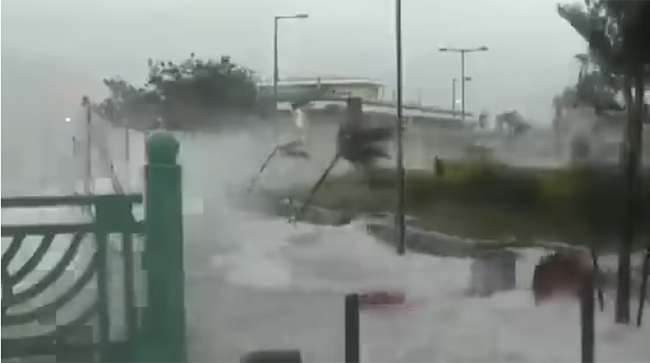Senior Reporter
Building Resilient Communities Best Way to Reduce Risks, FEMA Chief Says

The head of the Federal Emergency Management Agency said the extreme weather events that destroyed vital infrastructure this year in Texas, Florida, Puerto Rico, and the U.S. Virgin Islands illustrate the need to build resilient communities.

Long
“I cannot overstate the importance of focusing on investing in mitigation before a disaster strikes,” FEMA Administrator Brock Long told House transportation policymakers Nov. 2, in a prepared statement.
“Developing resilient capacity ahead of an incident reduces loss of life and economic disruption. When communities are impacted, they should ensure that they rebuild infrastructure better, tougher and stronger to protect taxpayer investment and promote economic stability,” he said
FEMA’s assertion that policymakers should advance certain incentives to allow cities to invest in resilient infrastructure projects meant to withstand the impact of extreme weather events was welcomed by the transportation panel. Several lawmakers agreed with FEMA that takeaways from the recent massive storms include the need for resilient rebuilding, as well as cost-effective federal infrastructure investments.
“We found mitigation is a critical part of saving lives and reducing costs,” said Rep. Lou Barletta (R-Pa.), chairman of the Economic Development, Public Buildings and Emergency Management Subcommittee. “We must build in mitigation on the front-end and ensure that, as the communities rebuild from these recent disasters, we’re building back in a way that will minimize damage in the next storm.”

DeFazio
Transportation and Infrastructure Committee ranking member Rep. Peter DeFazio (D-Ore.) added the federal government should encourage resilient rebuilding “so that we won’t be paying again, and again, and again for subsequent floods.” DeFazio also has urged the Trump administration to expand long-term investments in freight and passenger infrastructure projects.
The hurricanes that struck the Gulf Coast in Texas and Florida and U.S. territories in the Caribbean damaged vital freight corridors, contributing to a slowdown in distribution of commodities and supplies. Rebuilding efforts have been impeded due to poor access to roadways.
House Transportation and Infrastructure Chairman Bill Shuster (R-Pa.) traveled to Puerto Rico and the Virgin Islands the week of Nov. 5 with a congressional delegation that included DeFazio, as well as Sens. Lisa Murkowski (R-Alaska) and Tom Carper (D-Del.).
President Donald Trump and Puerto Rico Gov. Ricardo Rossello (R), during an Oct. 19 meeting in the White House touted the administration’s emergency response at the commonwealth. Federal agencies have aided officials with funding for critical freight corridors, shelters, and food distribution.
However, for several weeks San Juan, Puerto Rico Mayor Carmen Yulín Cruz (D) has strongly criticized the emergency response. “We are in a humanitarian crisis, and we have to do everything we can to stop the fallout before we hit a health crisis,” the mayor said in a recent video Sen. Elizabeth Warren (D-Mass.) posted on social media.
Last month, Trump signed into law a $36.5 billion disaster relief package aimed at assisting residents coping with natural disasters. That included $18.7 billion for FEMA’s disaster relief fund, $16 billion for the national flood insurance program, and $576.5 million to help West Coast communities dealing with wildfires.

